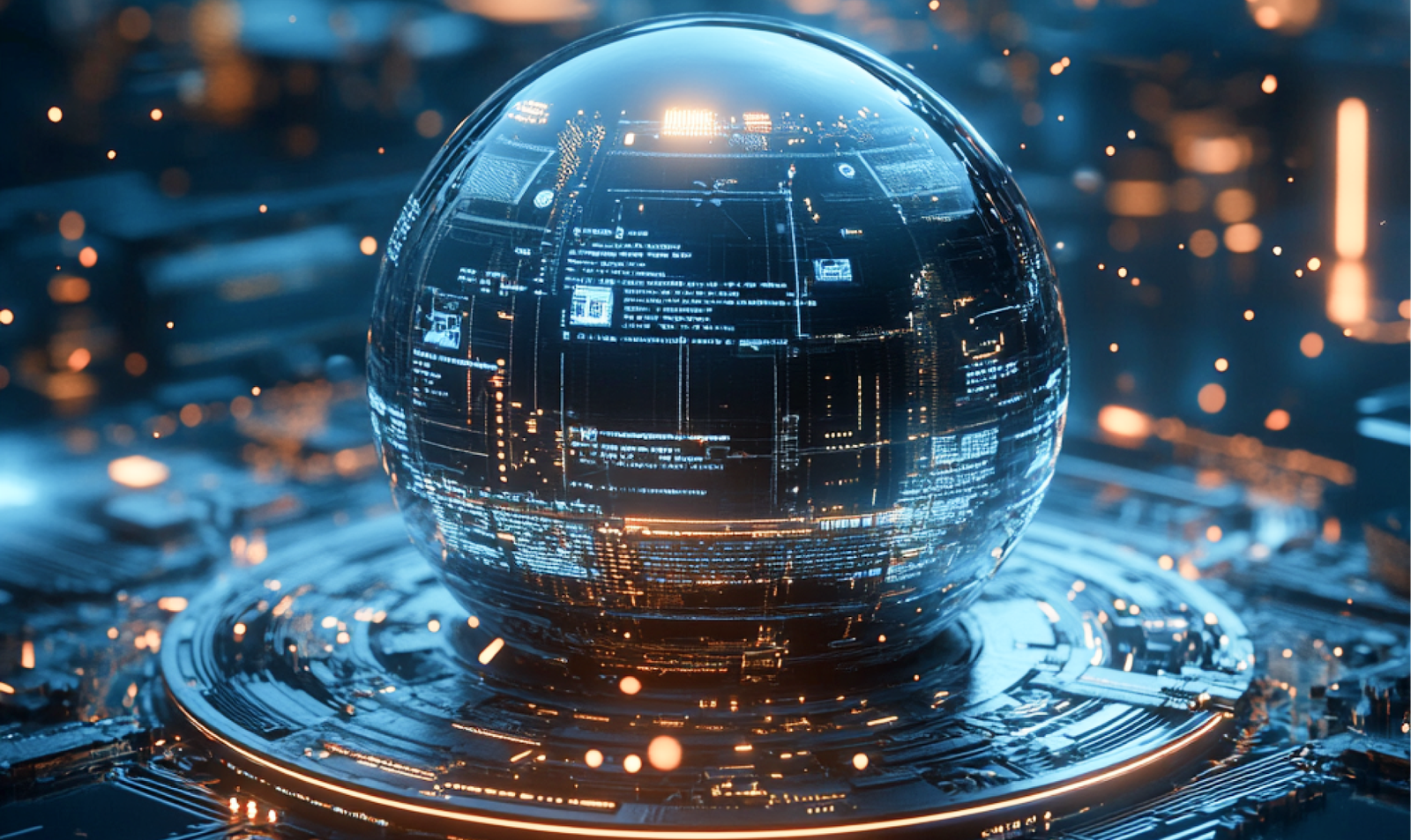Technology is evolving at a breakneck pace, and staying on top of the latest developments can feel like a full-time job. From how we work and communicate to how we manage our finances and daily lives, these advancements are reshaping our world. Understanding the key technology trends is essential for both businesses looking to innovate and individuals wanting to prepare for the future.
This guide explores the most significant technology trends you should be watching this year. We’ll look at the latest in artificial intelligence, the expansion of 5G, the interconnected world of IoT, the evolution of blockchain, and the critical role of cloud computing and cybersecurity. By the end, you’ll have a clear picture of how these technologies are driving change and what to expect next.
AI and Machine Learning
Artificial intelligence (AI) and machine learning (ML) have moved from science fiction to practical business tools. AI algorithms are now sophisticated enough to handle complex tasks that once required human intelligence, like recognizing speech, identifying patterns in massive datasets, and even creating original content. Machine learning, a subset of AI, focuses on creating systems that can learn and improve from experience without being explicitly programmed.
This year, generative AI is a major focus. Tools like ChatGPT and DALL-E 2 can produce text, images, and code that are nearly indistinguishable from human-created work. This has huge implications for content creation, software development, and design. Businesses are using generative AI to automate customer service with smarter chatbots, create marketing copy in seconds, and assist developers in writing code more efficiently. Beyond content, AI and ML are refining predictive analytics, helping companies forecast sales, manage inventory, and personalize customer experiences with unprecedented accuracy.
The Rollout of 5G Technology
The fifth generation of wireless technology, or 5G, is finally becoming widespread, and its impact goes far beyond faster download speeds on your smartphone. With its ultra-low latency and massive bandwidth, 5G is the foundational technology for a truly connected world. It enables real-time communication between devices, which is critical for the Internet of Things (IoT), autonomous vehicles, and advanced telehealth services.
For consumers, 5G means seamless streaming of high-definition video, lag-free online gaming, and enhanced augmented reality (AR) and virtual reality (VR) experiences. For businesses, the implications are even more profound. Manufacturers can create “smart factories” where machinery communicates instantly to optimize production lines. In healthcare, surgeons can perform remote operations with robotic assistance, and in cities, 5G can power intelligent traffic management systems to reduce congestion. As 5G networks expand, they will unlock a new wave of innovation across nearly every industry.
The Expanding Internet of Things (IoT)
The Internet of Things (IoT) refers to the vast network of physical devices—from smart home appliances to industrial sensors—that are connected to the internet, collecting and sharing data. The growth of IoT is exponential, with billions of devices now online. This trend is about making our environments more intelligent, responsive, and efficient.
In our homes, IoT devices like smart thermostats, security cameras, and voice assistants are already common. They learn our preferences and automate daily routines, making life more convenient. In the business world, IoT is revolutionizing industries. In agriculture, sensors can monitor soil moisture and nutrient levels to optimize crop yields. In logistics, IoT trackers provide real-time location and condition data for shipments, improving supply chain visibility. As IoT integrates with AI and 5G, we can expect more sophisticated applications, creating smart cities and highly automated industrial environments.
Blockchain Beyond Cryptocurrency
When most people hear “blockchain,” they think of cryptocurrencies like Bitcoin. While it is the technology that powers them, blockchain’s potential extends far beyond digital money. At its core, blockchain is a decentralized, distributed, and immutable ledger. This means it provides a secure and transparent way to record transactions and track assets without needing a central authority like a bank or government.
This security and transparency make blockchain valuable for various sectors. In supply chain management, it can be used to track goods from origin to consumer, ensuring authenticity and preventing counterfeits. In healthcare, blockchain can securely manage patient records, giving individuals more control over their medical data. It’s also being explored for voting systems, intellectual property rights, and real estate transactions. As businesses seek more secure and efficient ways to manage data and transactions, blockchain technology is set to become a standard tool for building trust in digital interactions.
Cloud Computing’s Continued Dominance
Cloud computing is hardly a new trend, but its role continues to evolve and grow. The “cloud” is a network of servers that provide on-demand computing services, including storage, processing power, and software applications, over the internet. It has become the backbone of digital transformation for businesses of all sizes, offering scalability, flexibility, and cost-effectiveness.
Recent advancements in cloud computing are focused on “serverless” computing and edge computing. Serverless architecture allows developers to build and run applications without managing the underlying servers, which streamlines development and reduces operational costs. Edge computing, on the other hand, brings computation and data storage closer to the sources of data. This is crucial for applications that require real-time data processing, like IoT devices and autonomous vehicles, as it reduces latency and saves bandwidth. The cloud remains the engine powering most of today’s tech trends, from AI model training to IoT data management.
The Ever-Present Need for Cybersecurity
As our reliance on digital technology grows, so does the threat of cyberattacks. Cybersecurity is no longer just an IT issue; it’s a critical business concern. Cybercriminals are becoming more sophisticated, using AI to launch automated attacks, exploit vulnerabilities, and create convincing phishing scams. This has led to a greater need for innovative defense strategies.
The latest trend in cybersecurity is a shift towards a more proactive and predictive approach. Instead of just reacting to threats, companies are using AI and machine learning to identify potential vulnerabilities and predict attacks before they happen. The concept of a “zero-trust” security model is also gaining traction. This model operates on the principle of “never trust, always verify,” requiring strict identity verification for every person and device trying to access resources on a private network, regardless of whether they are inside or outside the network perimeter. As digital transformation continues, robust cybersecurity will be essential for protecting sensitive data and maintaining trust.
Frequently Asked Questions (FAQ)
How can a small business use AI?
Small businesses can use AI in many affordable ways. AI-powered tools can automate customer service through chatbots, manage social media scheduling, analyze customer data for marketing insights, and even help with bookkeeping and inventory management.
Is 5G really that different from 4G?
Yes, it’s a significant leap. While 4G improved mobile internet speeds, 5G offers much lower latency (the delay before a transfer of data begins) and higher bandwidth. This allows for real-time communication between devices, which is essential for technologies like IoT and autonomous vehicles.
What are the privacy concerns with IoT devices?
IoT devices collect vast amounts of data, which raises privacy concerns. It’s crucial to use devices from reputable manufacturers that prioritize security, use strong, unique passwords, and regularly update your device’s firmware to protect your personal information.
Can blockchain be hacked?
While a blockchain ledger itself is extremely difficult to alter due to its decentralized and cryptographic nature, the applications and platforms built on top of it can have vulnerabilities. The most common security issues arise from smart contract bugs or security breaches on centralized exchanges.
Navigating the Future of Technology
The technology trends of this year are not isolated developments; they are interconnected forces driving significant change. AI is becoming smarter with the data from IoT devices, 5G provides the speed needed for them to communicate in real time, and blockchain offers a secure way to manage these interactions. All of this is powered by the flexible and scalable infrastructure of the cloud, with cybersecurity providing the essential protection. For businesses and individuals, understanding these trends is the first step toward harnessing their power and preparing for the exciting opportunities that lie ahead.




